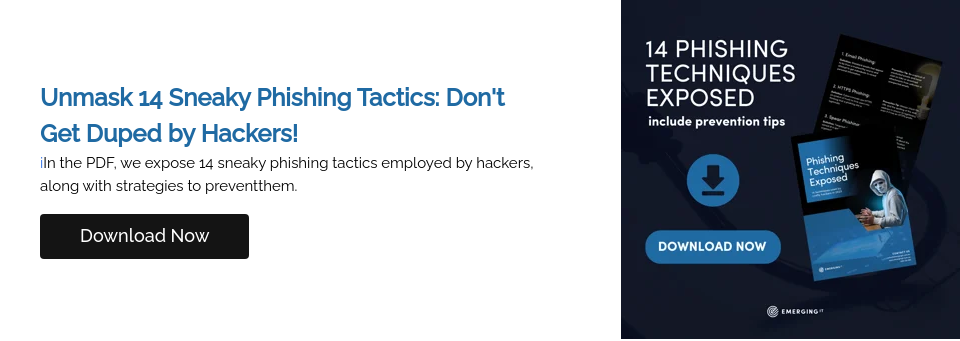Key Findings
- Phishing is not monolithic; it evolves and manifests in varied forms such as Clone Phishing, Pop-Up Phishing, and Watering Hole Phishing, each uniquely menacing and targeting users in discrete ways.
- Regardless of size or presumed safety, no organisation is immune to phishing threats, evidenced by real-world incidents even within Australian enterprises.
- Employing proactive strategies like understanding and recognising phishing attempts, following cybersecurity norms, and establishing emotional preparedness against manipulative tactics is vital for safeguarding against phishing.
Navigating the Unseen: Shielding Your SMB from Stealthy Phishing Tactics
Beneath the seemingly calm waters of your daily email traffic, invisible threats lurk, awaiting an opportune moment to strike. In the serene sphere of the Australian business landscape, a misconception has solidified into a dangerous belief: "We haven't been breached; therefore, we are safe." This is a perilous notion, especially amidst a rising tide of phishing attacks targeting our local businesses. Join us as we delve into the depths, revealing the hidden dangers that lurk beneath the surface and arming your SMB with the tools and knowledge to emerge more robust and more secure.
Phishing Deep Dive: Techniques Unveiled
In a fast-paced digital arena, phishing techniques are evolving, developing ever-more sophisticated and deceptive forms. Whether it's sneaky Clone Phishing, which duplicates legitimate messages with malevolent intent, or Pop-Up Phishing, where fake login windows seek your precious credentials, the mechanisms are multifaceted. Take, for instance, the sizable Australian enterprise that experienced a spear-phishing blitz, resulting in substantial data exposure and financial repercussions, a stark reminder that no entity is impervious.
Fighting Back: Protective Layers for Your Business
It's an unwritten rule in the cyber realm: understanding your adversary is the first line of defence. Recognising phishing attempts, adhering to cybersecurity norms, and psychologically preparing your team to identify emotional manipulation in phishing tactics form the foundational layers of protection. Implementing secure email gateways, employing spam filters, and utilising email authentication methods can also cast a secure net, filtering out malicious attempts reaching your inbox.
Visual: A schematic diagram illustrating the path of a phishing email, from sender to receiver, showcasing potential interception points.
A Stitch in Time: Proactive Phishing Mitigation
The first step in protecting your business is to anticipate the methods and strategies attackers may use to target your company. Having effective mail and spam filter systems in place will enable you to mitigate the majority of phishing attempts before they reach your employees. Another proactive measure is to ensure your mail servers are configured in a secure way with the latest anti-spam and security features enabled.
.png?width=900&height=675&name=Threat%20Landscape%20Trends%20for%20blog%20post%20(1).png)
From Awareness to Action: The Security Awareness Program
In a digital landscape interwoven with countless threats, knowledge can be your greatest defence and your most powerful weapon. An excellent strategy is to implement a comprehensive security awareness training program for your employees. This program would involve creating realistic scenarios that closely resemble the social engineering attacks they frequently encounter. By doing so, your employees can acquire the essential skills needed to effectively identify and defend against potential threats.
Conclusion
Peering into the depths of the unknown, we have uncovered hidden dangers, explored effective protective strategies, and highlighted the importance of practical cybersecurity measures. It is crucial to remember that unseen and unfamiliar threats are constantly present and continuously evolving. Your SMB does not have to navigate through these treacherous waters alone. Arm yourself, shield your business, and safeguard against potential vulnerabilities, transforming the unseen into the known and potential victimhood into empowered resilience.
